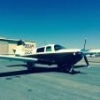Optimizing 201 engine performance
-
Members Online
- Andy95W
- Sherifferic
- ragedracer1977
- 47U
- CaliDreaminMr
- Falcon Man
- Hradec
- chrisburdzy98
- FLYFST
- lithium366
- SOLER
- Nico1
- jetdriven
- Peter T
- Ragsf15e
- Vance Harral
- outermarker
- bluehighwayflyer
- Pierre07
- gacoon
- Utah20Gflyer
- toto
- fmg85
- richardbrochu27
- ElkoRandy20J
- Max3293F
- Aerodon
- M20S Driver
- Bartman
- Hank
- 201er
- EricJ
- Culver LFA
- kowabunga
- jordanjms


Recommended Posts
Join the conversation
You can post now and register later. If you have an account, sign in now to post with your account.